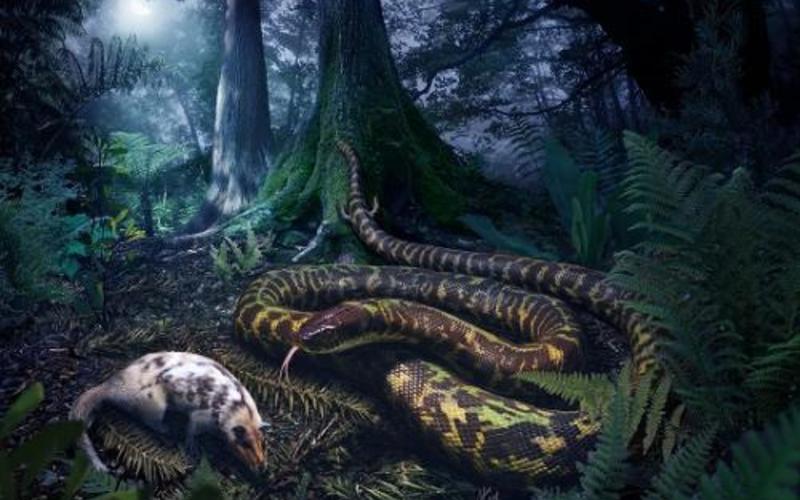
(from YaleNews) The ancestral snakes in the grass actually lived in the forest, according to the most detailed look yet at the iconic reptiles.
A comprehensive analysis by Yale University paleontologists reveals new insights into the origin and early history of snakes. For one thing, they kept late hours; for another, they also kept their hind legs.
“We generated the first comprehensive reconstruction of what the ancestral snake was like,” said Allison Hsiang, lead author the study published online May 19 in the journal BMC Evolutionary Biology. Hsiang is a postdoctoral researcher in Yale’s Department of Geology and Geophysics.
“We infer that the most recent common ancestor of all snakes was a nocturnal, stealth-hunting predator targeting relatively large prey, and most likely would have lived in forested ecosystems in the Southern Hemisphere,” Hsiang said.
Snakes have always captured the imagination of humans. Their long and sinuous body, fearsome reputation, and great diversity — with more than 3,400 living species — make them one of the most recognizable groups of living vertebrate animals. Yet little has been known about how, where, and when modern snakes emerged.
Other Links
Limbless Triumph, The Origin and Diversification of Snakes; BMC Series Blog